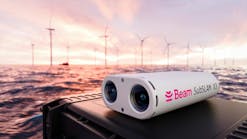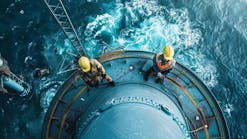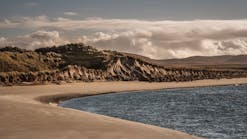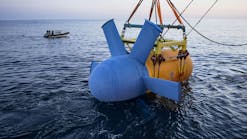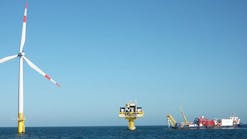US initiatives assess current wind challenges, future opportunities
Editor's note: This story first appeared in the September-October 2022 issue of Offshore magazine's first annual Offshore Wind Special Report. Click here to view the full Offshore issue or click here to view the special report.
By Wei Huang, Lars Samuelsson and Elizabeth Kretovic, ABS
From a commercial standpoint, there are interesting statistics and data evolving from the global opportunities in the offshore wind market.
According to an Intelatus Global Partners’ article released June 1, “The US offshore wind segment shows no signs of slowing on its journey to deploy 30 GW of offshore wind by 2030 and 110 GW by 2050.” Based on some state’s recently announced goals, Oregon is expected to achieve 3 GW by 2030 and California is expected to deploy 25 GW by 2045. The US offshore wind market capacity pipeline has 41,562 MW pending.
To date, there have been two projects announced to go to construction and another nine in the queue as they submitted construction and operations plans (COPs). The US Bureau of Ocean Energy Management (BOEM) plans to advance new lease sales and complete a review of at least 16 COPs by 2025, enabling a total of 19 GW of capacity, and is seeing reviews such as the recent submissions by the new owners of the New York Bight Lease Areas. State goals and power purchase agreement schedules are driving the initial spend toward initially fixed and eventually floating offshore wind as the industry moves into deeper water to 60 m or more.
Hurdles are being addressed such as the designs of suitable floating substations, which is a key consideration. Developments in port infrastructure, transmission connectivity and sourcing original equipment manufacturer equipment are all key challenges in the early development phase of floating offshore wind, but smart thinking across the supply chain is supporting the conceptual approach to this market sector.
Growing US-led initiatives
Key initiatives in the US include tax incentives to support wind component manufacturing, port enhancements as well as workforce development through labor agreements and university partnerships.
At ABS, the team has seen several US maritime training facilities join the Global Wind Organization to help ensure training is timely and successfully delivered for the offshore wind workforce to support construction goals.
Developers and engineering, procurement and construction companies are establishing different levels of internship programs with universities targeting career paths for the future growth of the industry. All these initiatives are coming together to establish a trained workforce targeting lower costs and to establish an industry focused on minimizing risk.
Strength and capability
Progress in the newbuild and retrofit of crew transport vessels (CTVs) through to wind turbine installation vessels (WTIVs) is being supported by ABS Class across all vessel sizes. Challenges exist in availability of vessel construction materials along with long lead time machinery components, which could potentially contribute to project schedule delays. However, incentivizing domestic production of critical materials that have complementary applications may relieve supply chain challenges. The creation of designated regional economic hubs for vessel construction, retrofit and maintenance in locations in close proximity to lease clusters will help in the early adoption of clean or alternative fueling infrastructure.
Recent developments include a subsea rock installation vessel, which was awarded by the Great Lakes Dredge and Dock Co. to the Philly Shipyard in Pennsylvania. The first Jones Act compliance service operation vessel is to be engineered, constructed and operated by Edison Chouest Offshore and will be built in the Gulf Coast. It will become an integral part of the operation and maintenance of Ørsted and Eversource's projects of Revolution Wind, South Fork Wind and Sunrise Wind offshore wind farms in the northeast US.
The Charybdis WTIV is the first Jones Act-compliant vessel and is under construction at Keppel AmFels Shipyard in Brownsville, Texas, for Dominion Energy's Virginia lease area. However, it will be chartered first to Ørsted for its Revolution Wind project in the northeast. Another solution contracted for Equinor and bp's Empire Wind project will use two new feeder barges and two diesel-electric hybrid tugboat units by Kirby Offshore Wind to supply a Maersk-owned WTIV with towers and turbines for installation off the coast of New York. All these vessels are being built to ABS class.
WTIVs a critical commitment
Political drivers are helping the US market. With $65 billion invested into grid infrastructure and more than $1 billion invested into port infrastructure to support shore-based offshore wind projects, the catch-up with other countries has begun. There is $3 billion in loan support where the government guarantees repayment of 100% of the principal and interest on loans for up to 80% of constructing energy projects in the US that embody innovative technologies and reduce greenhouse-gas emissions.
Due to the cost in the $550 million to $600 million-plus range and time required to build a US WTIV, project commitment is critical before securing investment with a sufficient chartering payback pipeline. The Department of Energy’s Loan Program Office (DOE LPO) and the Department of Transportation’s Maritime Administration (MARAD) are stepping in to support the offshore wind market. MARAD announced the designation of offshore wind vessels as Vessels of National Interest for support through the Federal Ship Financing Program, giving these applications priority for review and funding. The DOE LPO is looking at floating offshore wind projects and possible vessels connected with new clean technologies infrastructure.

